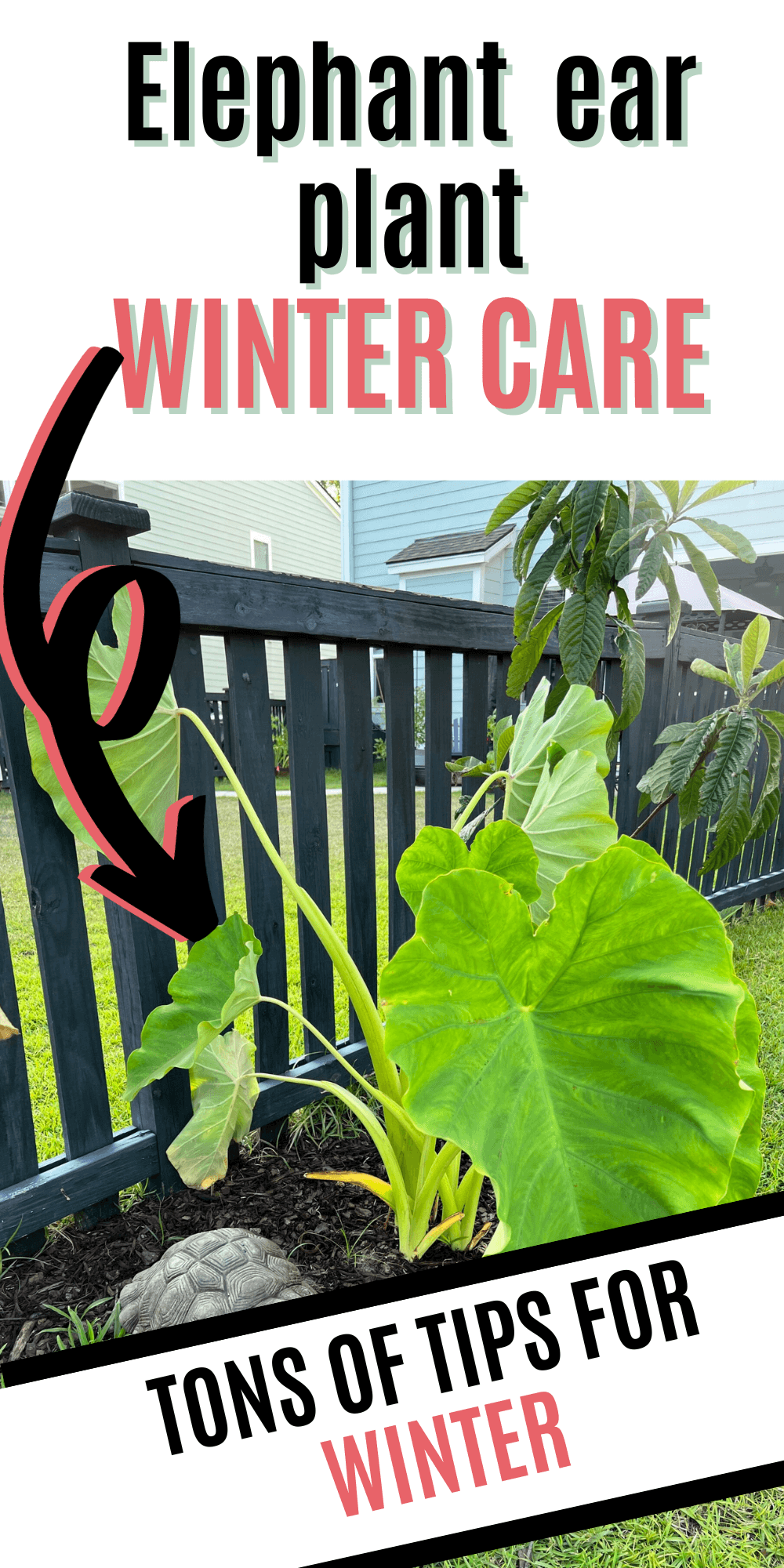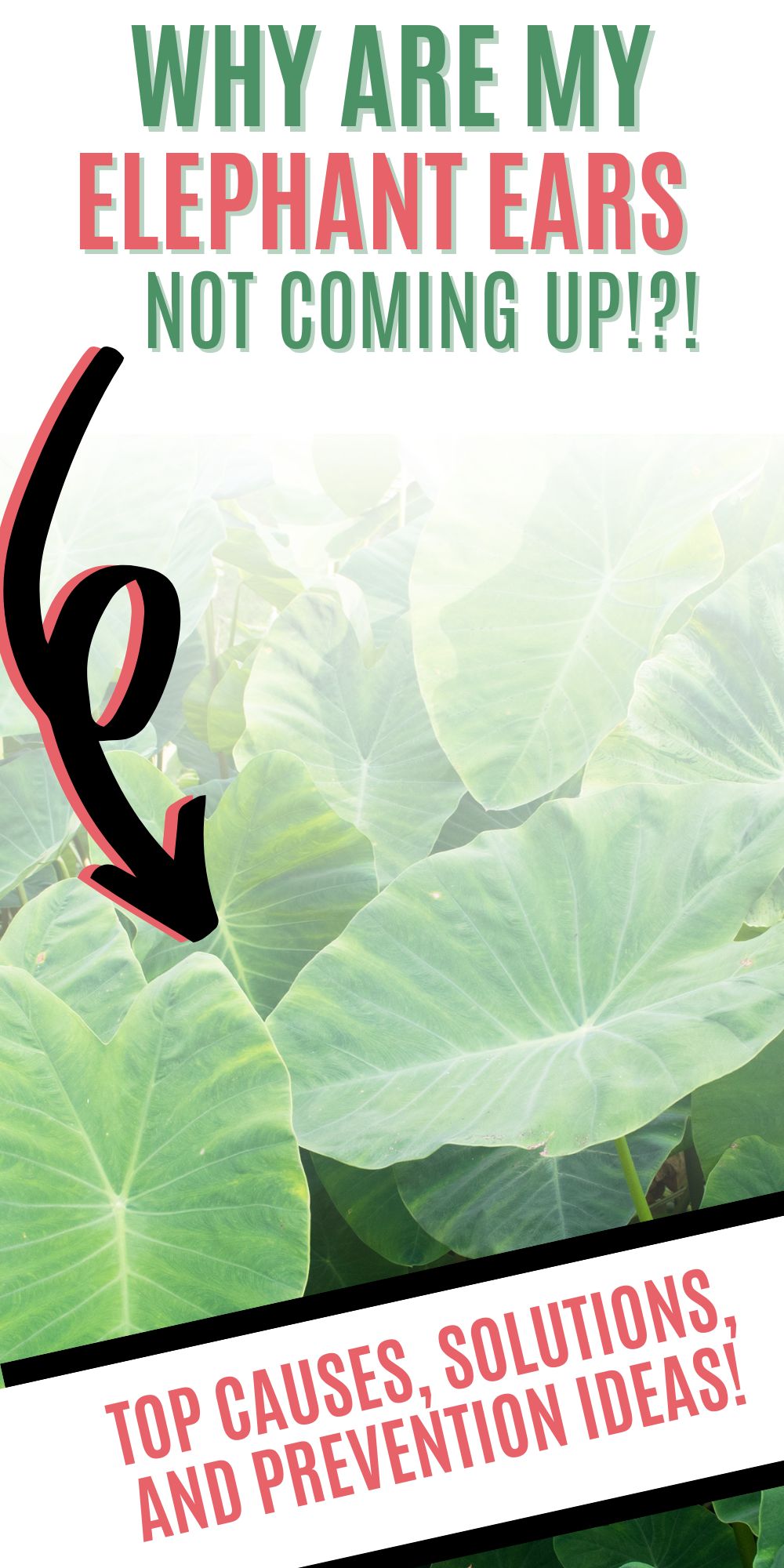Want to add a Giant Elephant Ear to your plant collection? They are beautiful and easy to care for! Here's my complete Giant Elephant Ear plant care guide!
This spring we were working on adding tropical plants along the fence in our backyard. I saw giant elephant ear bulbs at the store and grabbed a few on a whim.
I love elephant ears, so giant elephant ears are even better!
I have been thrilled with how easy to care for and quick growing they are. I am just counting down the months until they are back in store so I can add them to other parts of our yard, too!
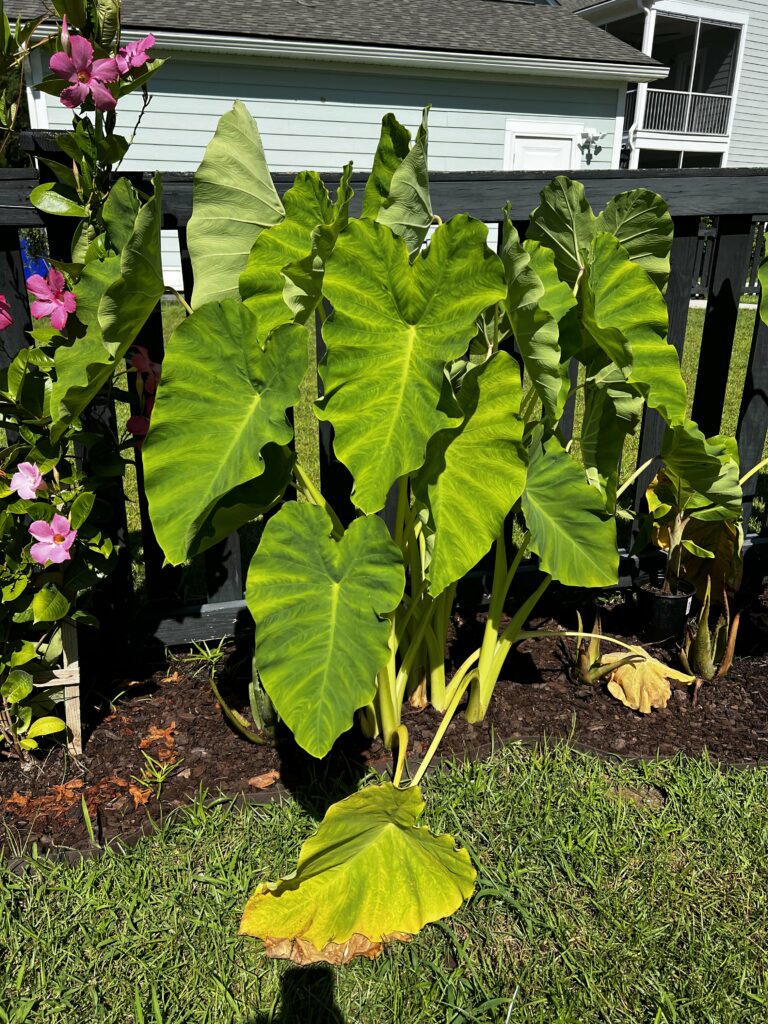
What is Giant Elephant Ear?
Giant Elephant Ear is - you guessed it - a giant version of everyone's favorite tropical foliage, the elephant ear.
These plants grow from a bulb and put out heart shaped leaves that can be several feet across - each. The plant as a whole can grow up to 10 feet tall and 10 feet across. They are very fast growing and a beautiful addition to any tropical garden.
Other names for Giant Elephant Ear include:
- Colocasia gigantea
- Thailand Giant
- Giant taro
- Ape plant
- Elephant Ear
- Ape flower
- Cocoyam
- Dasheen
- Elephant’s Ear Plant
- Night-scented Lily
- New Guinea Shield
- Taro
Giant Elephant Ear origins
The giant elephant ear originally comes from the rainforest of Thailand. They are lush, green, humidity loving plants with huge showy leaves.
Is Giant Elephant Ear rare?
No - they sell giant elephant ear bulbs by the huge bin at both Walmart and Lowes garden centers near us. They are easy (and cheap) to find in the spring!
Is Giant Elephant Ear toxic?
Giant elephant ears are toxic to humans and pets if eaten. Avoid eating the leaves!
Does Giant Elephant Ear flower?
Yes, these plants produce light yellow flowers that look a bit like calla lilies in the summer.
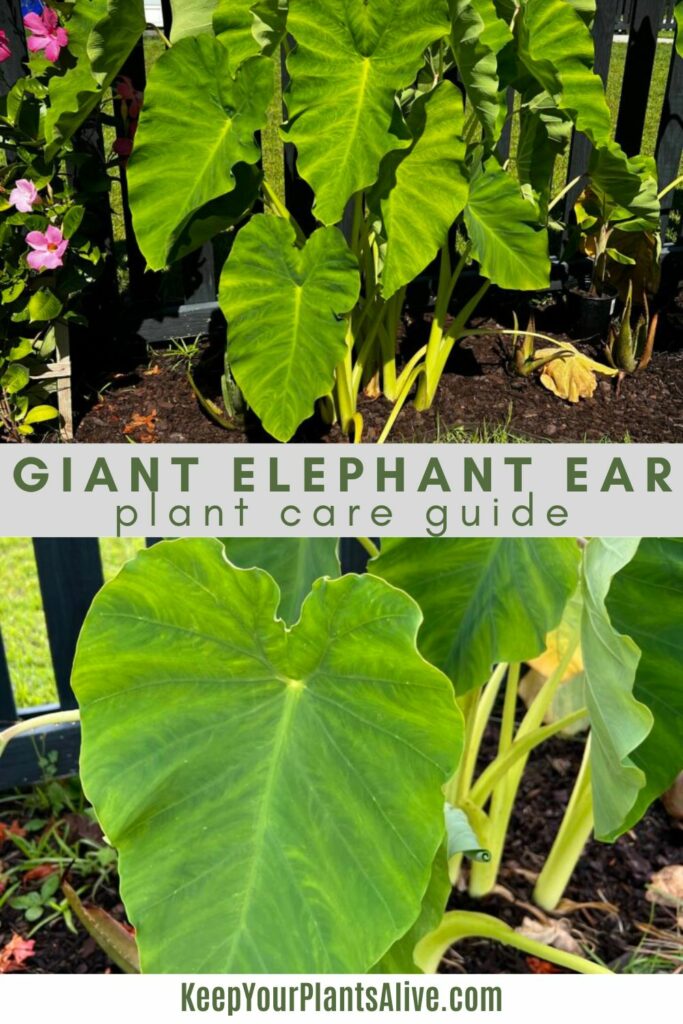
Giant Elephant Ear care guide
Giant Elephant Ears are easy to care for in the right conditions.
Giant Elephant Ear watering
Elephant ears prefer moist soil and do best if they don't dry out. They are native to the rainforest after all!
How often should I water my Giant Elephant Ear?
Giant elephant ear plants don't like to dry out, so water them as soon as the soil around them feels dry to the touch.
Can you overwater elephant ears?
Elephant ears love water and it's very hard to over water them. One culprit however could be clay soil trapping water like a ceramic bowl. Be sure that there is drainage to avoid the bulbs sitting in a pool of water.
Should I mist my elephant ear plant?
Elephant ears love humidity. If you live in a dry place, they will benefit from misting. When we go a while without rain, I like to water our leaves on the mist setting once a week or so!

Giant Elephant Ear lighting needs
Elephant ear plants love sun. They can take full sun or partial sun. We have 4 plants along our fence and the more sun that the plant gets, the larger that it gets!
Will Giant Elephant Ear survive the winter outdoors?
Giant elephant ears are hardy in zones 8-11. In zones 8-9 they will die back and regrow in the spring. In zones 10-11, they are usually evergreen.
If your plant dies back over the winter, expect it to start growing back in when temperatures are consistently around the clock at least 65 degrees.
If you live in a colder area, you can dig your bulbs up and bring them indoors for the winter.
Can I keep Giant Elephant Ear indoors?
Giant elephant ears could survive in a sunny, warm window indoors with enough humidity. But remember how huge they are! They need a lot of space.
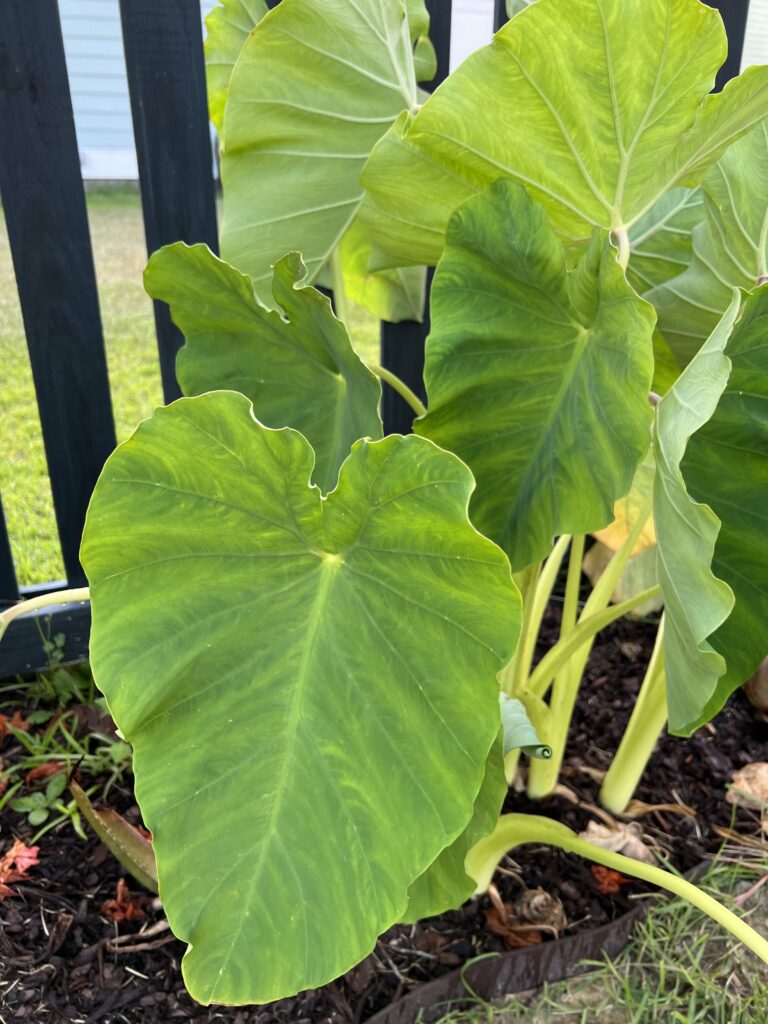
Giant Elephant Ear soil + potting
Elephant ears like well draining soil. Elephant ears like organic material such as compost or manure mixed in with their soil.
How do you plant elephant ear bulbs?
You plant giant elephant ear bulbs with the pointy side facing up! Plant them 24 inches apart to give the plant space to spread.
Giant Elephant Ear fertilization
Elephant Ears love being fertilized. Apply a general 20-20-20 fertilizer once a month in the warm growing months to help them grow as lush as possible.
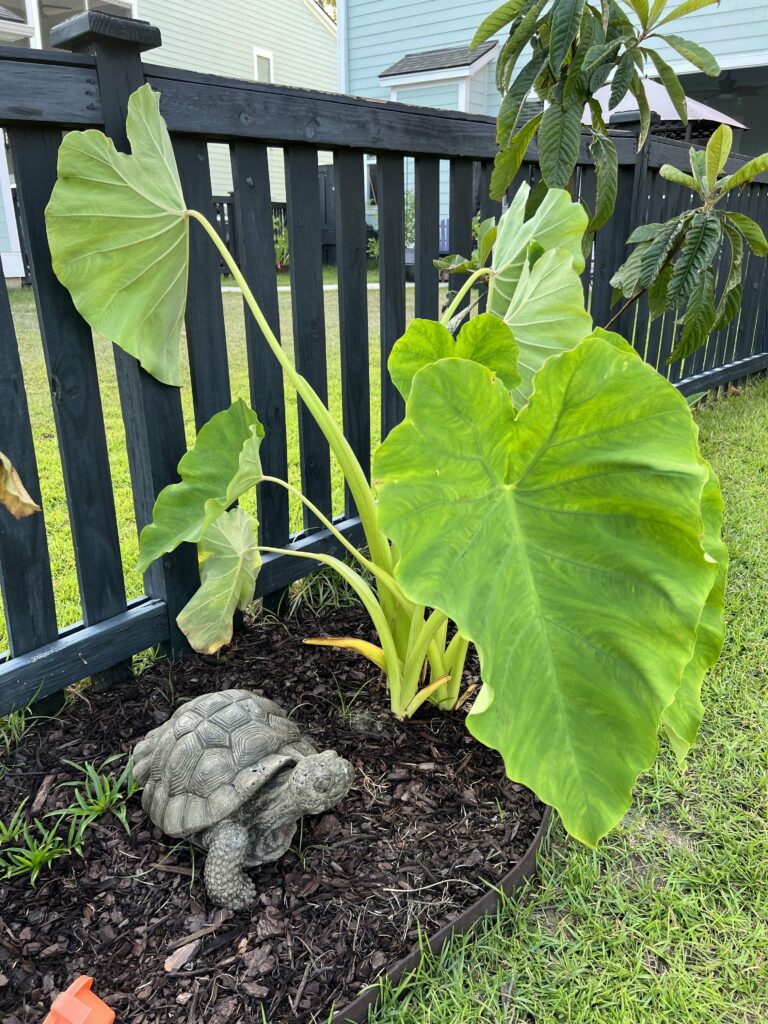
Troubleshooting Giant Elephant Ear
Why are my giant elephant ears leaves dying?
It is completely normal for giant elephant ears to drop their older leaves. They grow quickly and when they have too many leaves, let the older ones die off to save energy.
Alocasia macrorrhiza vs colocasia gigantea
These are two very similar looking plants - both are often called giant elephant ears! Typically, alocasia leaves point UP and colocasia leaves flop down a bit more!
How do you propagate giant elephant ears?
Giant elephant ear plants are generally propagated via division. This means, if your plant is looking huge, you can gently separate it by the bulb into two or more pieces and plant them separately!
Any more questions about giant elephant ear plants?
Thanks for reading!


Hey there, I'm Morgan, a houseplant enthusiast from sunny Charleston, South Carolina. Growing up surrounded by my mom's lush orchids and African violets, I discovered the magic of bringing nature indoors. Thanks to the pandemic, I delved deeper into houseplants, discovering their power to uplift moods and transform spaces. I'm here to spill all my secrets, helping you pick the perfect houseplant - and make it happy. Let's keep your plants alive, together! 😊

